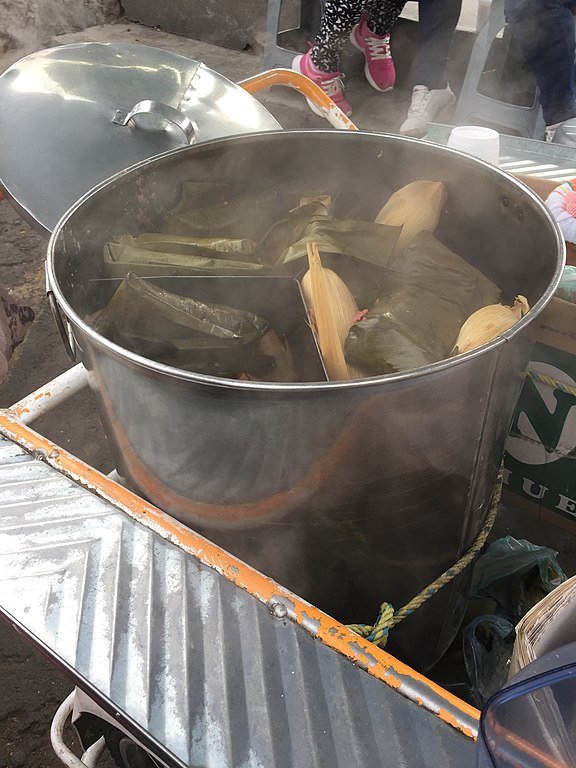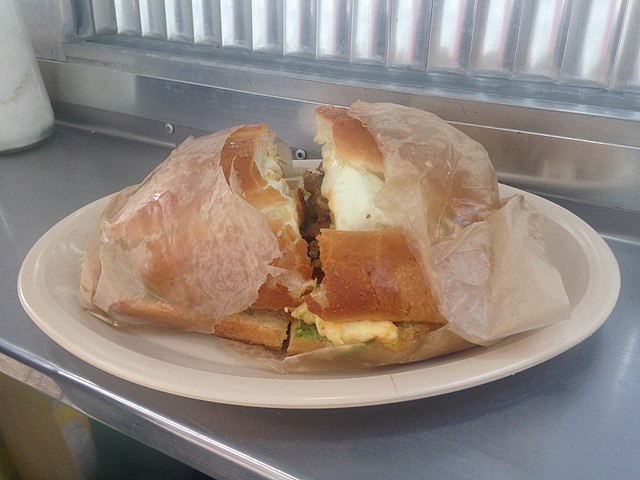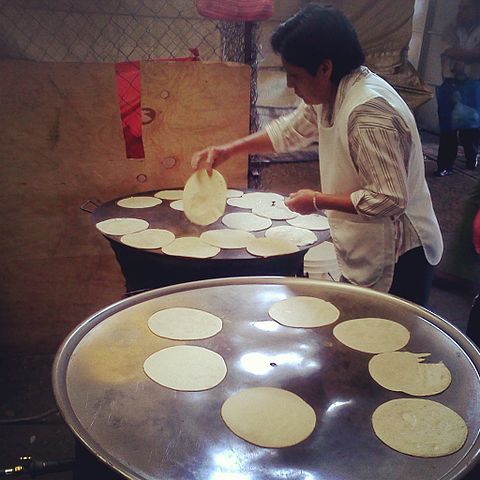Everybody comes to Mexico to eat. Street food is everywhere, and the city is alive with scents, smells, and flavors. For many international visitors, the temptation to try the food in the streets is thwarted by fear of poisoning, or ingesting something that you’d simply prefer to avoid.
Although food poisoning can be a concern, it’s also something that can generally be avoided. If you’re a newcomer, then read the pointers for what foods to avoid carefully. You can eat street food if you stick to the places obviously selling a lot already, with evident crowds and hungry people standing around willing to wait for it.
These are the most basic types of street food you should look for.
In Mexico City streets, Tacos al Pastor are the most famous . Tacos de Guisado are made from assorted dishes (ie; guisos) like beans and Tacos de Parilla are grilled, usually before your eyes. Tacos de Canasta, literally “basket tacos,” are usually prepared in the morning for sale throughout the day. Every taco has its afficionados, but these are the most important four categories.
1 – Pastor Tacos
Mexico City residents know very well that Pastor tacos accompanied Lebanese immigrants who arrived in Mexico at the turn of the 20th Century. Even still – it’s THE ESSENTIAL MEXICO CITY STREET FOOD. You can order just one or two, and they’ll give you more when you decide they’re fantastic.
2 – Tacos de Canasta
If you watch the Netflix series, you’ll get the idea that Tacos de Canasta are the best thing going in Mexico City. Often sold from a bicycle, they’re such a Mexico City specialty that visitors from other countries are not terribly likely to try them. Pity that. Usually filled with potatoes, sausage, marinade, pork rinds i.e.; chicharron, and refried beans, they’re very inexpensive, and sold everywhere – but especially in work places where other food options are absent, and where the bicyclist has a captive market. Always accompanied by hot sauce, they’re mouthwatering, and not to be passed up.
3 – Tacos de Guisado
Basically – anything from an assortment of pre-cooked dishes (guisados) that can fill a tortilla. They can include beans and little pork chops (chuletas), chicharrón in salsa verde and carne deshebrada or even eggs. Get your tacos de guisado from a well-known spot selling lots of them and with lots of customers. And honestly, there are famous places with 30-some guisados waiting for you. So eat up.
4 – Tacos de Parilla and Tacos de Bistek!
Grilled Tacos – (tacos de parilla) – are most often sold as tacos de bistek. Along with a few related varieties, chuletas (pork chops), chorizo, or longaniza, there are also some magnificent Argentinian sausages at times available in the city. Bistek tacos are presented with your choice of extras like – beans, onions, nopales, and salsas. Don’t eat the salsas from desolate and/or sad taco stands. The more individual taco-eaters, the safer your stomach will be.

Generally sold on trikes in the night, there are also, especially mornings, vendors on many street corners. “¡TAMALES! ¡OAXAQUEÑOS!” are sold in banana leaves and can range into the positively gourmet. Others are wrapped in corn husks and are often no less delicious. The odd Mexico City variant – the tamale torta – just needs a bit more salsa. For breakfast, a deep fried tamale wrapped in a fresh bolillo bread roll is unbeatable with a styrofoam cup of atole.

Chilangos eat them all the time. And while English-speaking peoples have their “subs, hoagies, and grinders,” Mexico City tortas are not too terribly different.
Almost all are served with standard sandwich fixings. Mayonnaise, avocado, tomato, onion. Some torteros will be surprised if you accept a picante – usually sliced jalapenos called rajas or chipotle sauce, but you will fit in better if you accept one or the other.

A pre-hispanic cooking surface you’ll see them all over the city.
Important: Nearly everything that comes off of a comal can come with white dried cheese, or crema, or both. These are generally best avoided by delicate stomachs and people who’ve not adjusted to Mexico City food.
Learning to appreciate each of them is one of the great pleasures you’ve signed up for. Stick with the places selling a lot of them or with people waiting and you’ll enjoy yourself.
Don’t be afraid to say “Sin queso” and “Sin crema,“ (i.e.; without cheese, and without cream).
An enormous sub-field the Mexico City food tour has grown up around the idea of eating and enjoying more of the food available in the streets. Real foodies have taken to organized, guided tours that are today plying everywhere in Mexico City where food is being sold and enjoyed.
And we’ve listed many of the very best. Provecho